In the boundless realms of Xianxia novels, various fantastical Mythical Beasts are indispensable elements. They might serve as loyal companions to protagonists, act as pivotal forces driving the plot, or emerge as formidable adversaries. These creatures not only enrich the novel’s world-building but also carry profound cultural significance and symbolic meaning. This article will comprehensively analyze numerous Xianxia and Fantasy genre works to unveil the top ten most frequently appearing ancient divine beasts, detailing their origins, symbolic meanings, abilities, characteristics, and profound impact on the storyline.
Unveiling Ancient Mythical Beasts: A Deeper Look
Here, we dive into the most renowned Mythical Beasts populating Xianxia tales.
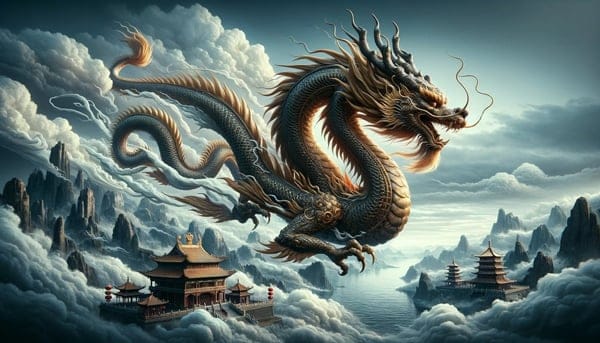
1. Lóng (Chinese Dragons / Various Dragon Races)
Origin: The Lóng, or Chinese Dragon, is the most central and ancient totem in Chinese mythology. Its imagery is deeply rooted in the fusion of various animals throughout millennia of Chinese civilization.
Unlike the often malevolent, fire-breathing Western dragons, the Lóng in Chinese culture is a sacred, benevolent, and powerful symbol. They are intrinsically linked with water, clouds, and rainfall, embodying wisdom, fortune, and imperial authority. Revered as ancestors, they are symbols of the entire nation.
In Xianxia novels, Lóng races are depicted as ancient beings of immense power and supreme nobility. They boast diverse forms such as the auspicious True Lóng, the winged Yinglóng, the time-controlling Zhúlóng, and various sub-species like Jiaolóng and Chilóng. These are considered among the most esteemed and potent Ancient Divine Beasts within the celestial and terrestrial realms, truly majestic Mythical Beasts.
Symbolic Meaning: Authority, power, auspiciousness, royalty, transformation, guardianship, destiny, supremacy, benevolence. Lóng typically represent unparalleled status, formidable abilities, and deep heritage, embodying the very essence of imperial and cosmic might.
Abilities & Characteristics:
- Abilities: Capable of summoning wind and rain, riding clouds and mist, controlling lightning and water-based magic. They possess extraordinary physical strength, can shapeshift into human forms, and wield powerful innate divine abilities such as spatial teleportation, time manipulation, or mastery over specific natural laws.
- Characteristics: Majestic, noble, and often benevolent (especially towards those they acknowledge or those with pure intentions), though they can also be cold and merciless (towards their enemies). True Lóng are generally portrayed as righteous and just, while other Lóng races vary in temperament, from fiercely loyal to cunning.
Impact on Plot:
- Identity Symbolism: Often serve as the protagonist’s bloodline origin, guardian spirit beast, or a source of important legacy, symbolizing the protagonist’s extraordinary background or immense potential to ascend.
- Plot Driver: Lóng secret realms, ancestral feuds, and Lóng blood treasures frequently form crucial parts of the main or sub-plots. Protagonists might acquire Lóng artifacts, gain their recognition, or find themselves entangled in the ancient conflicts of Lóng races.
- Source of Power: Lóng pills, Lóng souls, and Lóng blood are consistently depicted as top-tier materials for enhancing cultivation, refining magical artifacts, or even becoming the protagonist’s life-bound artifact or innate divine ability, symbolizing ultimate power. These Mythical Beasts provide endless plot possibilities.
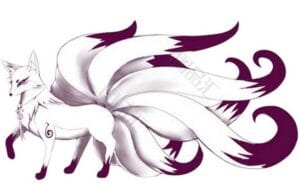
2. Nine-Tailed Fox
Origin: The Nine-Tailed Fox originates from ancient Chinese mythology, first recorded in the “Classic of Mountains and Seas” as an auspicious beast that could ward off evil and protect from illness if eaten. However, in later developments, especially under the influence of works like Investiture of the Gods, its image gradually became demonized, symbolizing charm, cunning, and national ruin. In Xianxia novels, the Nine-Tailed Fox is often portrayed as an ancient demonic beast with extreme beauty and powerful enchanting abilities, typically representing the most noble bloodline within the fox tribe. This makes it a standout among Fantasy Creatures, making it one of the most intriguing Mythical Beasts.
Symbolic Meaning: Enchantment, allure, wisdom, cunning, devotion and sacrifice in love, captivating allure, intertwined fortune and misfortune.
Abilities & Characteristics:
- Abilities: Proficient in illusions, captivating hearts, and shapeshifting. They possess powerful mental attacks and mesmerizing abilities. More tails signify greater power, with nine tails representing the pinnacle. Some can also control the five elements and possess immortality or powerful self-healing abilities.
- Characteristics: Versatile, sometimes charming and ruthless, other times deeply affectionate. They are intelligent and cunning, adept at strategizing, but can also be consumed by love, leading to intense devotion.
Impact on Plot:
- Key Supporting Role: Often serves as the protagonist’s spirit beast, companion, confidante, or significant antagonist. Their complex romantic entanglements often act as catalysts for the plot.
- Emotional Development: The appearance of the Nine-Tailed Fox frequently signals emotional turmoil or a turning point in fate, bringing tests of love for the protagonist.
- Strategic Mastermind: Due to their wisdom and illusionary arts, they often provide crucial advice to the protagonist at critical moments or set up traps to mislead enemies.
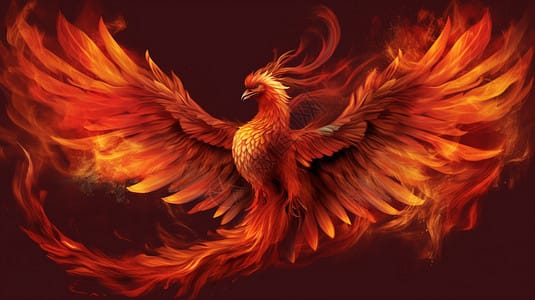
3. Phoenix (Vermilion Bird / Fire Phoenix)
Origin: The Phoenix is the king of birds in ancient Chinese mythology, alongside the Lóng as a totem of the Chinese nation. The Phoenix is not a single entity but comprises the male Feng and female Huang. The Vermilion Bird is one of the Four Divine Beasts, representing the South and belonging to the Fire element, often conflated with or referred to as the Phoenix. In Xianxia novels, they typically denote powerful divine birds possessing fire abilities and the power of nirvana and rebirth, symbolizing eternity and new beginnings. They are true Ancient Divine Beasts among Mythical Beasts.
Symbolic Meaning: Auspiciousness, nobility, eternal life, nirvana, light, rebirth from ashes, regal aura, good fortune.
Abilities & Characteristics:
- Abilities: Controls extreme fire power (Phoenix True Fire), capable of rebirth from ashes (immortality), possessing powerful recovery and offensive capabilities. Their calls are beautiful, and their wing beats can generate winds. Some can control time or space laws and purify evil.
- Characteristics: Pure, arrogant, graceful, benevolent (towards the good), but merciless towards evil. They possess immense vitality and an unyielding will.
Impact on Plot:
- Bloodline & Legacy: Often serves as the protagonist’s guardian beast or bloodline legacy, granting the protagonist immense power and unique encounters.
- Overcoming Adversity: The characteristic of rebirth from ashes is frequently used as a catalyst for the protagonist’s power surge after facing desperate situations, or as a key to breaking through bottlenecks.
- Portent of Fortune: The Phoenix’s appearance often accompanies auspicious omens, signaling significant events or the dawn of a new era, and can even influence the destiny of heaven and earth.
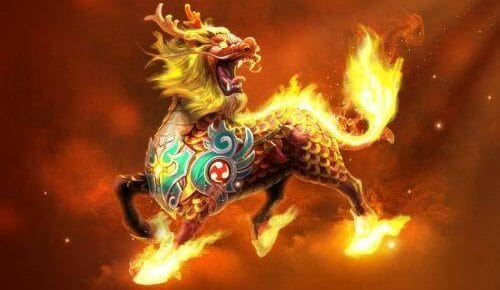
4. Qilin (Kirin)
Origin: The Qilin is an auspicious divine beast in ancient Chinese mythology, often listed among the “Four Spirits” alongside the Lóng, Phoenix, and Tortoise. Legends describe it as having a deer-like body, ox tail, horse hooves, a single horn on its head, and colorful fur on its back. It is said not to tread on living insects or grasses, representing the embodiment of benevolence. This makes it a revered member of any Demonic Beast Compendium and a beloved example of Mythical Beasts.
Symbolic Meaning: Auspiciousness, benevolence, nobility, righteousness, sanctity, progeny, blessings, protection of residences. It symbolizes peace and high moral character.
Abilities & Characteristics:
- Abilities: Can walk on fire, immune to evil magic, possesses powerful defense and offense (Qilin True Fire). It brings auspiciousness, suppresses evil, and sometimes controls space or lightning. Its blood or scales are often regarded as treasures of heaven and earth.
- Characteristics: Benevolent, upright, gentle, and disinclined to kill, but becomes majestic and powerful when confronting evil forces, serving as a guardian of righteousness.
Impact on Plot:
- Protagonist’s Fortune: Often serves as a divine beast protecting the righteous path, or as the protagonist’s spirit beast and mount, bringing extraordinary fortune and blessings.
- Crisis Resolution: The Qilin’s appearance often accompanies auspicious omens, foreshadowing good events or the arrival of significant figures. Its benevolent nature can sometimes bring about plot twists, such as advising the protagonist to abandon vengeance.
- Guardian: Qilin are frequently depicted as guardians of spiritual mountains and sacred lands or divine beasts suppressing evil entities, their mere presence capable of deterring villains.
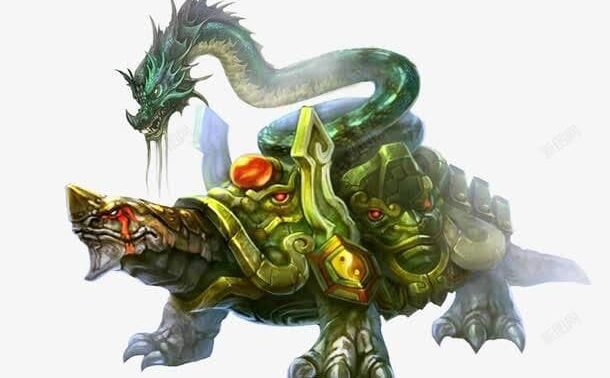
5. Xuanwu (Black Tortoise – or its variants like Baxia, Fuxi, etc.)
Origin: Xuanwu is the God of the North in ancient Chinese mythology, one of the Four Divine Beasts, depicted as a combination of a tortoise and a snake. It represents the North, winter, and water. In Xianxia novels, it often refers to ancient spirits of tortoises or tortoise-snake hybrids possessing extreme defense and longevity. Sometimes, its variations from the Lóng’s nine sons are included, such as Baxia (immensely strong, good at carrying steles) or Fuxi (fond of literature, good at coiling). They are iconic Ancient Divine Beasts.
Symbolic Meaning: Stability, longevity, defense, wisdom, steadfastness, control over water and earth elements, suppression, endurance.
Abilities & Characteristics:
- Abilities: Possesses unparalleled defensive power (Xuanwu Armor), capable of controlling water and earth magic, and having an extremely long lifespan. It can foresee the future and guard a region. Its shell is often described as an indestructible treasure.
- Characteristics: Calm, reserved, steadfast, and loyal. It does not easily engage in conflict, but once it acts, its power is immense.
Impact on Plot:
- Guardian Beast: Often serves as a mountain-guarding divine beast or the core of an ancient formation, where its defensive capabilities are crucial for breaking through.
- Defense Enhancement: The protagonist might gain the Xuanwu’s recognition or inheritance, thereby enhancing their defensive power and survival capabilities, potentially even gaining immortality.
- Wise Guide: Due to its longevity and wisdom, it sometimes serves as a living witness to history, providing the protagonist with ancient secrets and guidance, revealing primordial truths. These wise Mythical Beasts are invaluable.

6. Taotie
Origin: Taotie is a ferocious evil beast in ancient Chinese mythology, first mentioned in the “Classic of Mountains and Seas.” Legends describe it as having a sheep’s body with a human face, eyes under its armpits, tiger teeth, and human claws, making sounds like an infant. It is a man-eating monster. Later generations extended its meaning to symbolize greed and gluttony, making it one of the Four Fierce Beasts. Its presence adds intensity to any Demonic Beast Compendium.
Symbolic Meaning: Greed, ferocity, insatiable desire, destruction, primal instinct, perpetual dissatisfaction.
Abilities & Characteristics:
- Abilities: Possesses unparalleled devouring ability, capable of consuming all things, including spiritual energy, magical artifacts, and even the essence of living beings. It has immense strength and astonishing defense. Some can absorb and transform the power of what they devour. Its “Taotie Maw” is an abyss.
- Characteristics: Ferocious, bloodthirsty, tyrannical, and insatiably greedy. It has almost no emotions, knowing only consumption and destruction, being the embodiment of desire.
Impact on Plot:
- Major Antagonist: Often appears as an ancient fierce beast or a sealed demonic entity, posing a huge threat to the protagonist in early or later stages.
- Core of Evil Cultivation: Sometimes serves as the core of certain evil cultivation techniques, where cultivators gain power by absorbing Taotie’s essence but lose their humanity, leading to corruption.
- Power Item: Taotie’s stomach, blood, and other parts are often used by evil cultivators to forge forbidden artifacts or nurture demonic creatures. Its appearance often represents a great crisis and challenge, driving the protagonist’s continuous growth against these Mythical Beasts.
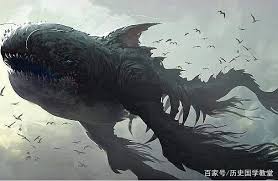
7. Kunpeng
Origin: Kunpeng is a gigantic mythical beast from ancient Chinese mythology, first appearing in Zhuangzi’s Free and Easy Wandering. It describes a fish in the Northern Darkness named Kun, so vast that its size is unknown for thousands of li; it transforms into a bird named Peng, whose back is unknown for thousands of li. It soars ninety thousand li on a whirlwind, resting only after six months. As one of the prominent Fantasy Creatures, it embodies profound concepts.
Symbolic Meaning: Freedom, grandeur, transcendence, detachment, carefree wandering, immense potential and breakthrough, unconventional spirit, the path of the Great Dao.
Abilities & Characteristics:
- Abilities: Highly unpredictable, capable of transforming between fish form (Kun) and bird form (Peng). It possesses extreme speed and vast vision, able to roam the nine heavens, cross the four seas, and even traverse different spaces. Its body is colossal, and its power boundless. Its flapping wings can generate thunder and wind.
- Characteristics: Transcendent, unconstrained by worldly affairs, symbolizing the natural Dao and a spirit of unrestrained freedom. Sometimes appears indifferent, not easily involving itself in worldly disputes, pursuing ultimate liberation.
Impact on Plot:
- Immortal’s Mount/Legacy: Often serves as an immortal’s mount or the legacy of an ancient divine beast, symbolizing the protagonist’s extraordinary background or profound destiny.
- World Expansion: Its vast flight capabilities are often used to transport the protagonist through dangerous territories or to distant lands, significantly expanding the novel’s world-building.
- Realm Breakthrough: The Kunpeng’s appearance often suggests that the protagonist is about to face a realm breakthrough or comprehend a higher level of the Dao, closely linking to concepts of freedom and the Great Dao, inspiring the protagonist’s deeper understanding of universal truths. These Mythical Beasts elevate the journey.

8. Baize
Origin: Baize is a divine beast from ancient Chinese mythology, first recorded in Baopuzi and Baize Tu. Legends say it can speak, understand the nature of all beings, and know all matters of ghosts and gods in the world, distinguishing right from wrong and discerning the true forms and origins of demons and monsters. It’s a truly unique Ancient Divine Beast.
Symbolic Meaning: Wisdom, insight, auspiciousness, warding off evil, vast knowledge, omniscience, discernment of all things, keen perception.
Abilities & Characteristics:
- Abilities: Capable of knowing all things in the world, including the origins, habits, and weaknesses of various demons and ghosts, and even foreseeing the future and distinguishing truth from falsehood. It possesses extremely high wisdom and analytical abilities, representing knowledge and truth.
- Characteristics: Gentle, intelligent, rational, and disinclined to fight. It prefers to offer guidance and assistance, embodying the essence of a wise sage.
Impact on Plot:
- Protagonist’s Strategist: Often serves as the protagonist’s strategist or guide, providing crucial information and direction, helping the protagonist solve mysteries and expose conspiracies.
- Key to Solutions: The Baize’s appearance often helps the protagonist find ways to overcome difficulties or reveal hidden truths, becoming a pivotal plot point.
- Guardian: Sometimes also acts as a knowledge guardian of ancient relics or secret realms, testing the protagonist’s wisdom and virtue. This type of Mythical Beasts acts as a living encyclopedia.
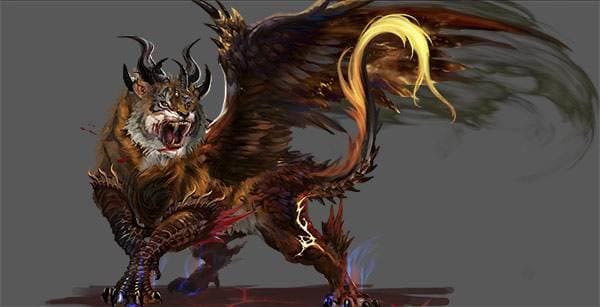
9. Qiongqi
Origin: Qiongqi is one of the “Four Fierce Beasts” in ancient Chinese mythology, first mentioned in the “Classic of Mountains and Seas.” Legends describe it as having a tiger-like form with wings, a man-eater. It specifically devours humans, starting from the head, and encourages evil while punishing good, symbolizing wickedness. It’s a dark entry in any Demonic Beast Compendium.
Symbolic Meaning: Ferocity, evil, violence, betrayal, disaster, chaos, slander, ill omen.
Abilities & Characteristics:
- Abilities: Possesses powerful flight and attack capabilities, capable of absorbing negative emotions and power, causing chaos and disaster. It is skilled at bewitching hearts, distorting black and white, and often accompanies the onset of plagues or calamities. Its attacks carry strong corrosive and cursing effects.
- Characteristics: Ferocious, brutal, and cunning. It delights in doing evil, often instigating discord and betraying others, reveling in cannibalism and spreading wickedness.
Impact on Plot:
- Major Antagonist: Often appears as a powerful assistant to villainous characters or a tool used by evil forces, being a source of chaos and disaster.
- Formidable Obstacle: The Qiongqi’s appearance often brings immense catastrophe and disorder, representing a formidable obstacle that the protagonist must overcome. Its evil power frequently leads to widespread suffering.
- Heart Devil Trial: It can entice protagonists or supporting characters to stray from the right path, testing the protagonist’s resolve and will, forcing them to choose between good and evil. These are truly terrifying Mythical Beasts.
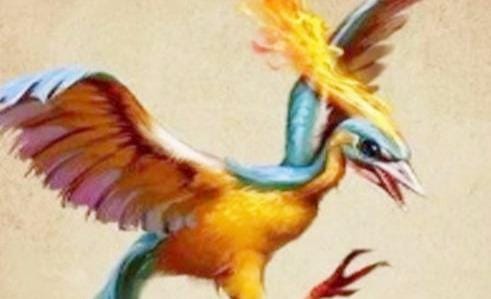
10. Bifang
Origin: Bifang is a fire-element divine bird in ancient Chinese mythology, first mentioned in the “Classic of Mountains and Seas.” Legends describe it as having a crane-like form, with one foot, a red pattern, blue markings, and a white beak. It does not eat grain but eats fire. Its appearance often portends droughts. This unique Fantasy Creature represents a fascinating blend of power and peril.
Symbolic Meaning: Fire, drought (early), pure flame power, speed, agility, a blend of danger and opportunity.
Abilities & Characteristics:
- Abilities: Controls pure fire power (Bifang True Fire), capable of causing droughts. It flies extremely fast and possesses powerful offensive capabilities. Its flames can burn all things, purify evil, or refine magical artifacts.
- Characteristics: Early depictions were fierce, but in later Xianxia novels, it gained more spiritual intelligence. Sometimes it appears arrogant and aloof, but its true nature is pure, recognizing only the strong; only powerful fire cultivators can control it.
Impact on Plot:
- Fire Spirit Beast: Often serves as a fire-controlling spirit beast, providing the protagonist with fire-element power or serving as a mount, assisting the protagonist in combat.
- Key to Solutions: The Bifang’s fire power is sometimes key to unsealing certain seals, refining rare materials, or confronting specific enemies.
- Calamity/Opportunity: Its appearance might be linked to natural disasters (like droughts), but it can also be an opportunity for the protagonist to gain powerful fire abilities or top-tier artifact refining opportunities. These diverse Mythical Beasts add richness to Xianxia.
These frequently appearing Ancient Divine Beasts in Xianxia novels not only inject fantastical vitality into the stories but also, through their unique forms, abilities, and cultural symbolism, profoundly influence the plot’s direction and offer readers endless imagination. Understanding them is to understand the deeper construction and allure of the Xianxia world. For more on the foundational concepts, explore wiki on Xianxia. You can also learn more about how these creatures fit into the broader system of cultivation in our article about Xianxia Cultivation Techniques.

This article was an absolute treat! I loved learning how the Lóng differs so much from Western dragons – that distinction is genuinely fascinating and makes so much sense for Xianxia. Seeing how each Mythical Beast, from the wise Baize to the fierce Taotie, isn’t just a creature but a symbol deeply woven into the story, really highlights the richness of the genre. It’s given me a new appreciation for the world-building!
Our website is filled with stories that masterfully execute this arc. We have carefully curated a selection of novels that feature compelling weak to strong protagonist journeys, from the humble beginnings of a martial artist to the grand ascension of a cosmic immortal. To find your next great read, start by exploring our catalog of completed novels.